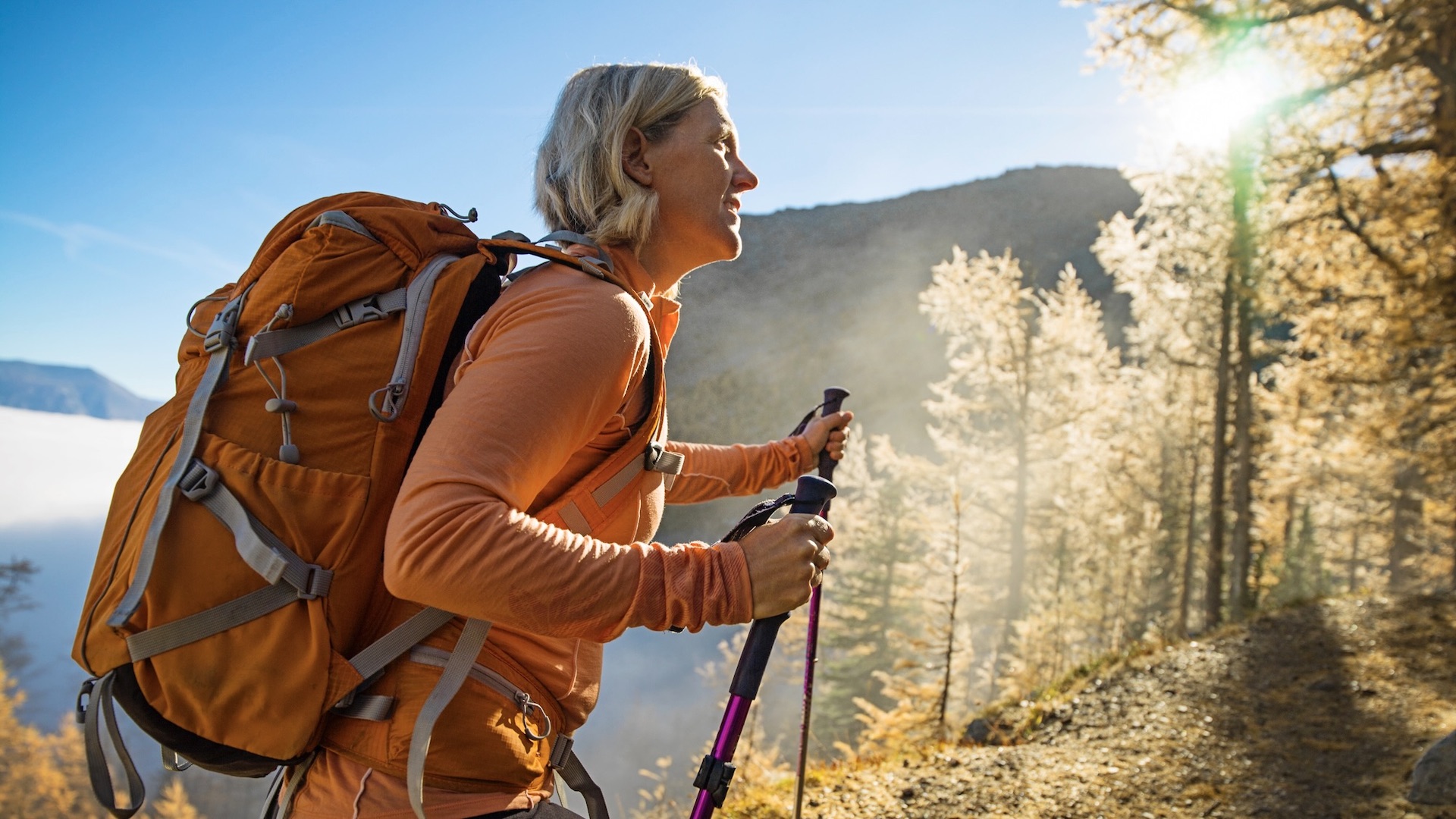How does sun protective clothing work? And do you really need it?
Is UPF-rated clothing a clever marketing ploy to get you to part with your dollars, or does it really offer you more protection from the sun?

No matter the season, no matter the weather, if you’re spending time outdoors, you need to be thinking about sun protection. These days, a lot of outdoor gear like hiking pants and running tops boasts labels advertising UPF certification, and if you’re a bit skeptical, you might be thinking – doesn’t all clothing provide sun protection?
Is so-called UPF clothing just a clever marketing ploy to get you to spend more money, or does certain clothing actually provide better sun protection? Read on to get your questions answered.

What is UPF clothing?
Ultraviolet Protection Factor, or UPF, clothing is clothing made from fabric that’s been certified as able to block a certain amount of UV radiation. Loose-weave clothing like a linen shirt can allow the sun’s harmful rays to pass through micro-holes when you’re wearing it outdoors, and this effect can be made worse when the garment is light-colored.
UPF clothing is constructed to block the majority of UV rays to provide better sun protection, with a higher thread count, a tighter weave and is often dyed to be darker. Some UPF clothing may also use a finish to get its sun protection (kind of like how waterproof clothing has a DWR coating).
A UPF designation indicates how much UVB and UVA rays a fabric allows to reach your skin. For example, the UPF 50 fabric used in Columbia’s Women’s Saturday Trail Hiking Trousers blocks 98 percent of the sun’s rays, while UPF 30 rating of the Mammut Aada women’s hiking shirt blocks 97 percent of the sun’s UV rays.
In order to receive a Seal of Recommendation from the Skin Cancer Foundation, a fabric must have a UPF of at least 30. Anything between 30 to 49 qualifies as very good protection, while UPF 50+ rates as excellent.

Is UPF better than SPF?
If you do recreate somewhere that’s both sunny and often warm, you may reasonably be weighing the advantages of clothing versus sunscreen. After all, if you hike in the southwest, covering up in clothing might not sound as appealing as wearing shorts and a tank top and using sunscreen as your first line of defense.
All the latest inspiration, tips and guides to help you plan your next Advnture!
A 2022 study by the Oregon Health and Science University compared four sun-protective fabrics against two broad spectrum sunscreens and concluded that, while sunscreen remains an important mode of protection, clothing “should be considered the cornerstone of UV protection”.
The obvious advantages of clothing over sunscreen are that you never have to reapply it, there’s no mess and you don’t need to keep replacing the bottle every few months.

Does UPF wash out of clothing?
It all depends on how the UPF is constructed. If your clothing has a UPF designation because of how the fabric constructed, with a tight weave, then it won’t come out in the wash (though as an article from the Cleveland Clinic points out, as your clothing breaks down and the fabric thins with wash and wear, the protection will reduce as with any clothing).
If your clothing relies on a spray-on treatment for sun protection, it will come out after a certain amount of washing, so it’s important to read the label and understand how your clothing provides its protection.

Do I need to wear sunscreen under UPF clothing?
If you’re lucky enough to hike and run in an area with abundant sunshine, you’re probably used to spending a lot of money on sunscreen and lathering up regularly. Sunscreen is expensive and greasy. It stains your clothes and stings when it gets in your eyes, so if we didn’t absolutely need to use it, we wouldn’t. So can you trade the sunscreen when you’re wearing UPF clothing, or do you need both?
UPF clothing doesn’t totally eliminate the need for sunscreen, but that’s largely because there will always be areas of your skin that are still exposed. If you’re going hiking wearing a long-sleeved hiking shirt and long pants with UPF 50 protection, you don’t also need to lube up with sunscreen on your arms, legs and torso unless you have a medical reason to be concerned about the remaining two percent of rays. You will, however, want to protect your face, scalp, ears, neck and hands with sunscreen, and your eyes with sunglasses.

Doesn't all clothing provide sun protection?
While UPF clothing has been found, at least by one study, to exceed the benefits of sunscreen, the question remains as to whether it actually has any advantage over non-UPF clothing.
A 2014 study found that regular clothing, and specifically wool clothing, may match or even exceed sun-protective clothing in blocking UV radiation, but a 2022 review of research on sun protective clothing noted that the study failed to account for factors such as the number of launderings and differences in the weaving patterns of the fabrics.
Basically, when it comes to the science, the research is still conflicting, however, according to the Skin Cancer Foundation, most clothes generally do block a good deal of the sun’s harmful rays. That said, if you're looking for clothes that you’re going to wear out on the trail for extended periods, you’ll want to look out for the following factors to ensure you receive the maximum amount of protection possible.
- Weave: Make sure any clothing you’re wearing outdoors has a tight weave – simply hold it up to the light and you’ll be able to see if it allows a lot of light to pass through or blocks it out. Dense-weave fabrics like synthetic materials and wool tend to be best.
- Fabric: Not all fabrics offer the same level of sun protection; unbleached cotton, polyester and other shiny fabrics generally act as better barriers.
- Fit: It turns out that fit comes down to more than just comfort and personal preference. Tight clothing that stretches across your body can allow in more light rays than looser fitting clothing, so leave yourself a little room to breathe and consider pants instead of leggings for hiking.
- Color: You’ve probably always learned that dark colors make you hot and light colors keep you cool, but dark and bright colors make you warm by absorbing UV rays rather than allowing them to pass through, so they actually give you better protection. If there’s no way you’re going desert hiking in a black top, consider bright colors instead.
- Coverage: Logically speaking, the more coverage a garment gives you, the better protection it provides, so if you always go for tank-style tops, start to look at long-sleeve models with underarm venting to help you stay cool.
Julia Clarke is a staff writer for Advnture.com and the author of the book Restorative Yoga for Beginners. She loves to explore mountains on foot, bike, skis and belay and then recover on the the yoga mat. Julia graduated with a degree in journalism in 2004 and spent eight years working as a radio presenter in Kansas City, Vermont, Boston and New York City before discovering the joys of the Rocky Mountains. She then detoured west to Colorado and enjoyed 11 years teaching yoga in Vail before returning to her hometown of Glasgow, Scotland in 2020 to focus on family and writing.

